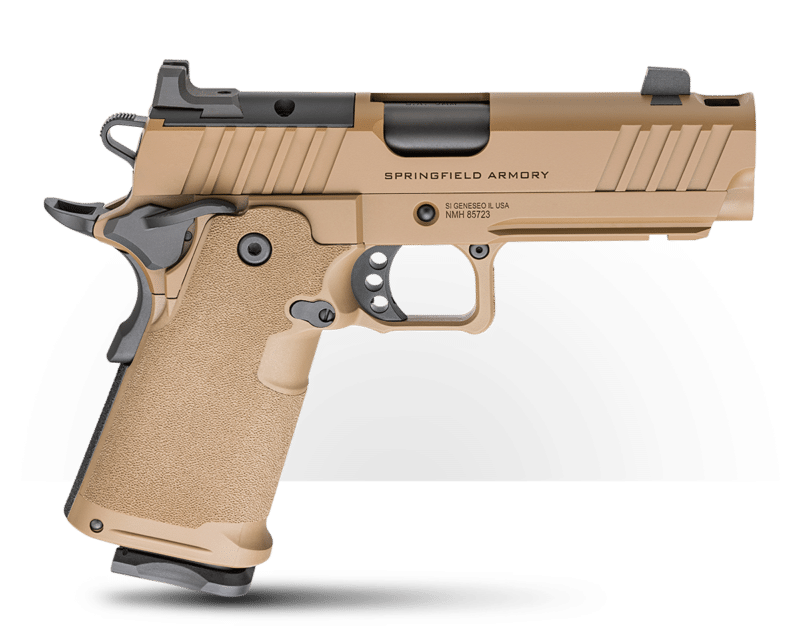How to Store a Gun for Home Defense
October 13th, 2024
6 minute read
Proper storage of firearms is important to keep them out of the wrong hands. When you keep a gun for home defense, you have to balance speed of authorized access against security.
In this article, I will talk about some of the best gun storage options when access for defensive use is important.
First Step: Evaluate Your Circumstances
Before you can decide how to keep your firearms, you should examine your situation. Your circumstances will impact what methods you use to secure your weapons.
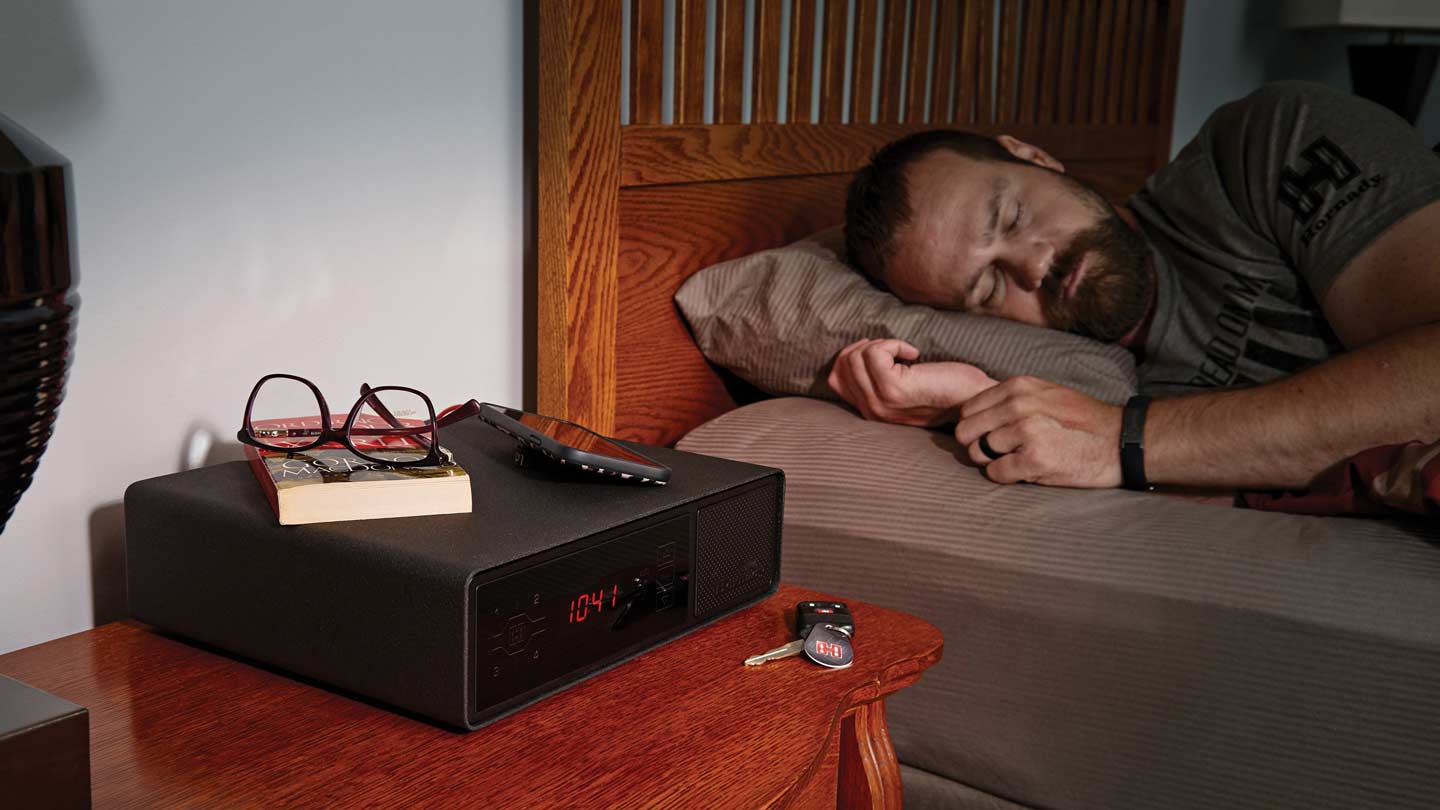
If you have children or visitors that bring children into your home, you must store your firearms with a reasonable level of security to prevent them from obtaining the guns. This will limit your storage options, but responsible gun ownership includes safe storage.
Another thing to consider is your home’s layout. Certain areas may be better places to store a gun due to the amount of time you spend there. Other places may be poor locations due to the lack of space or accessibility. How you store a gun is influenced greatly by where you can store one.
Staging vs. Storage of Firearms
Pre-positioning of firearms for home defense needs is sometimes called staging. A staged firearm is a gun that is stored in a ready-to-use condition. Like a fire extinguisher, they are intended for emergency use.
Some people — people I respect, mind you — make a distinction between the storing and staging of firearms. They correctly point out that when you store a non-staged firearm, it should be unloaded and kept in a very secure location such as a gun safe.
For the purposes of this article, I use the terms storing and staging interchangeably. To my mind, a staged gun is a subset of stored guns just like non-staged guns that are unloaded and locked in a safe are also a subset of stored guns.
Gun Storage Methods
Once you evaluate your needs and circumstances, you can plan your home defense storage plan. While there are an infinite number of variations, storage breaks down into three basic categories: exposed, hidden and lock boxes.
Let’s get into each of them now.
Exposed Storage
Exposed storage is when you lay out a gun in plain view for easy access. This could be leaning a rifle against your night stand when going to bed or leaving a 1911 on top of your desk. Exposed storage offers no security at all, but it may offer the fastest access.
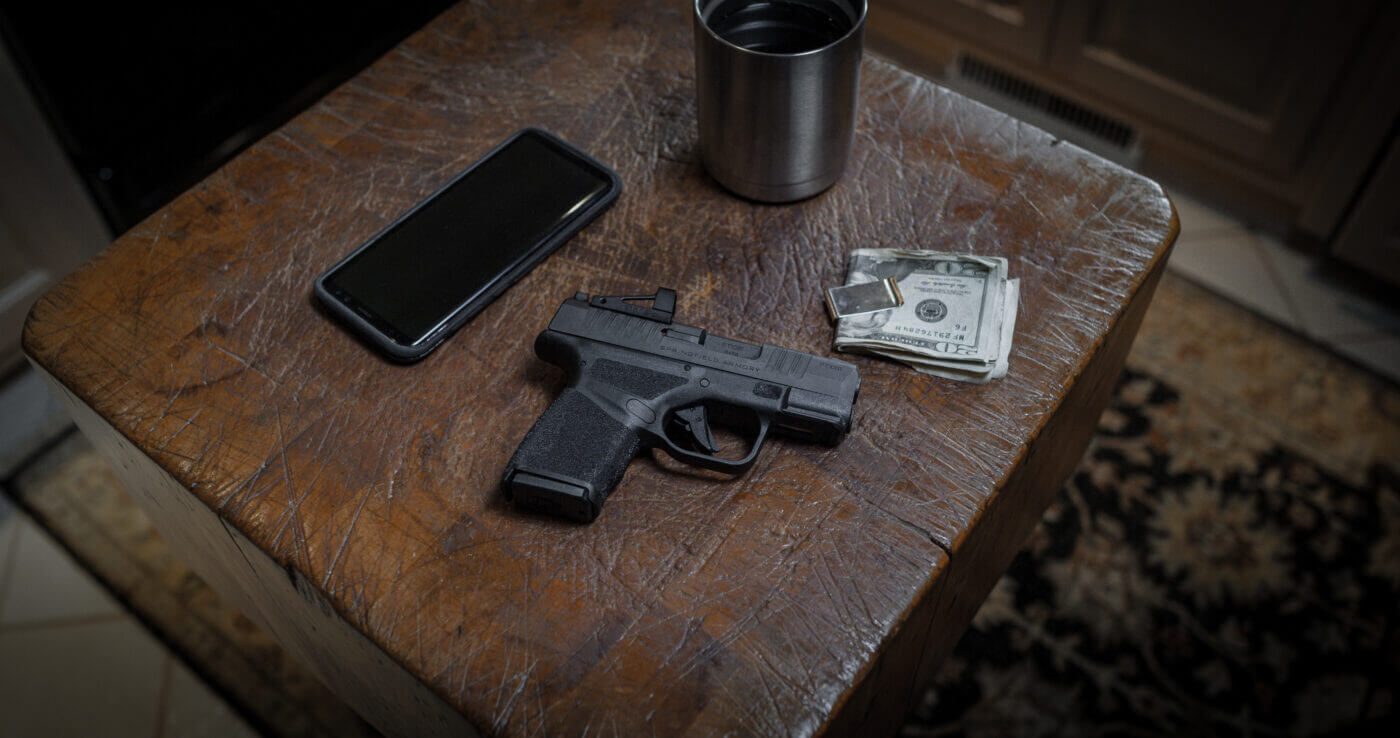
Exposed storage is responsible only when you trust everyone else that may have ready access to the firearm. You would not want to use it if you have small children or were working in an office that was open to the public. Further, it should be secured when left unattended.
Hidden Gun Storage
Hiding a gun uses concealment as a form of security. While some methods of hidden gun storage offer some measure of access control, many methods do not. So, be careful when selecting the proper secret storage location if you have kids or other people that would irresponsibly handle a firearm.
At its most basic, hidden storage can be as simple as keeping a pistol in a desk drawer. However, there are more advanced methods of hiding a gun from plain view, yet keeping it close at hand for a home defense need.
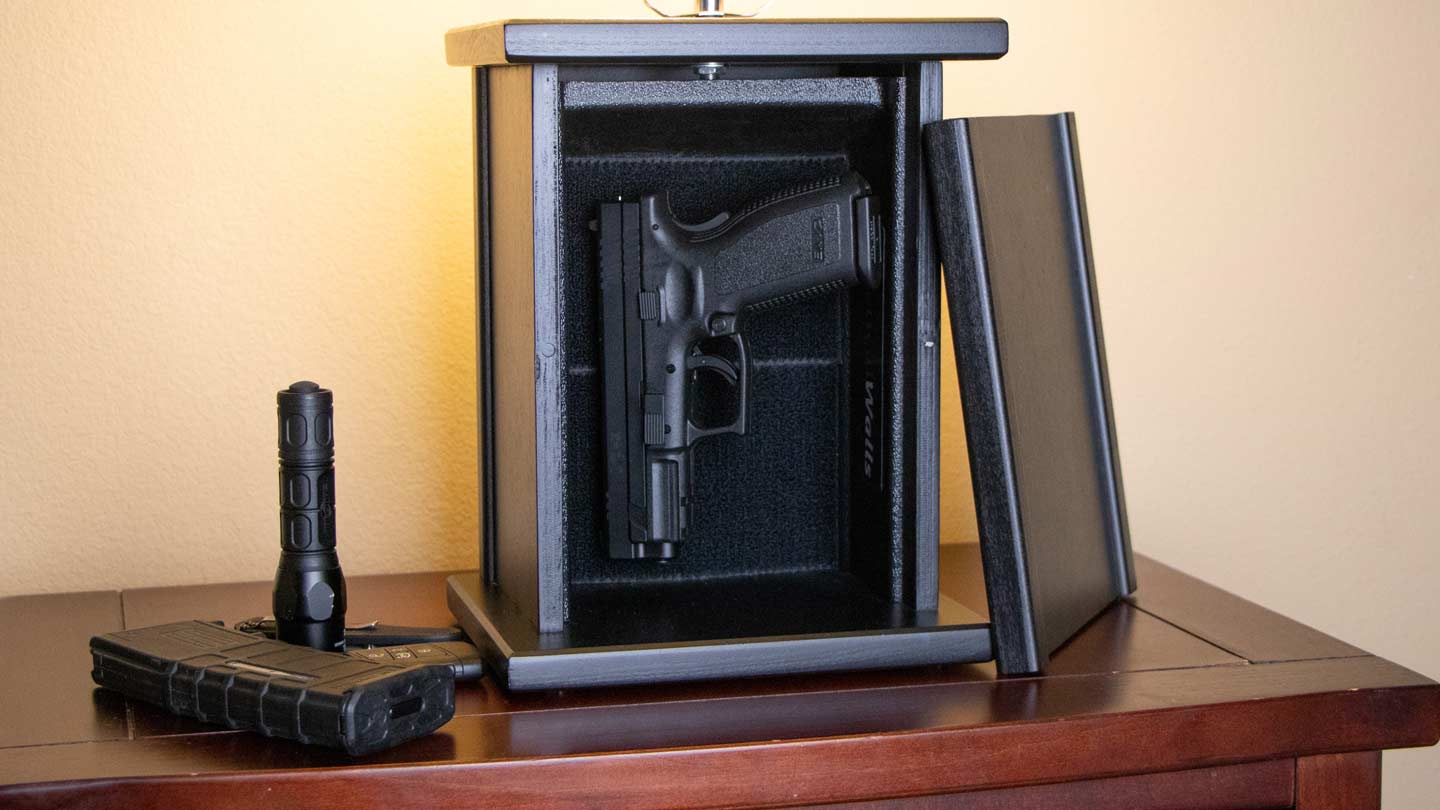
Tactical Walls is one of the premier companies when it comes to building home décor with defensive functionality. The company offers a range of furniture and built-ins that are purpose-built to store guns. Many of these concealed gun storage solutions are quite handsome and will fit into a well-appointed home.
One of the company’s top products is the Top Locking Shelf. It is a fully functional shelf with a drop down storage area designed to store a carbine like the Springfield SAINT AR-15, a pistol and even spare ammunition. I’d recommend visiting the company’s website for other unique covert gun storage ideas.
There are other secret gun storage solutions to consider. You could, for example, hollow out a large book to conceal a pistol within it. Sitting on a kitchen counter or desktop, the book would look like any other reading material. Yet, it would offer fast access to a defensive weapon. I’m sure with a little thinking, you can come up with all kinds of creative gun storage ideas.
Secure Gun Storage: Lock Boxes
While a full-on safe will offer the best protection against theft, fire and other losses, there is another option for people that want fast access to a secured home defense gun. I call these devices lock boxes.
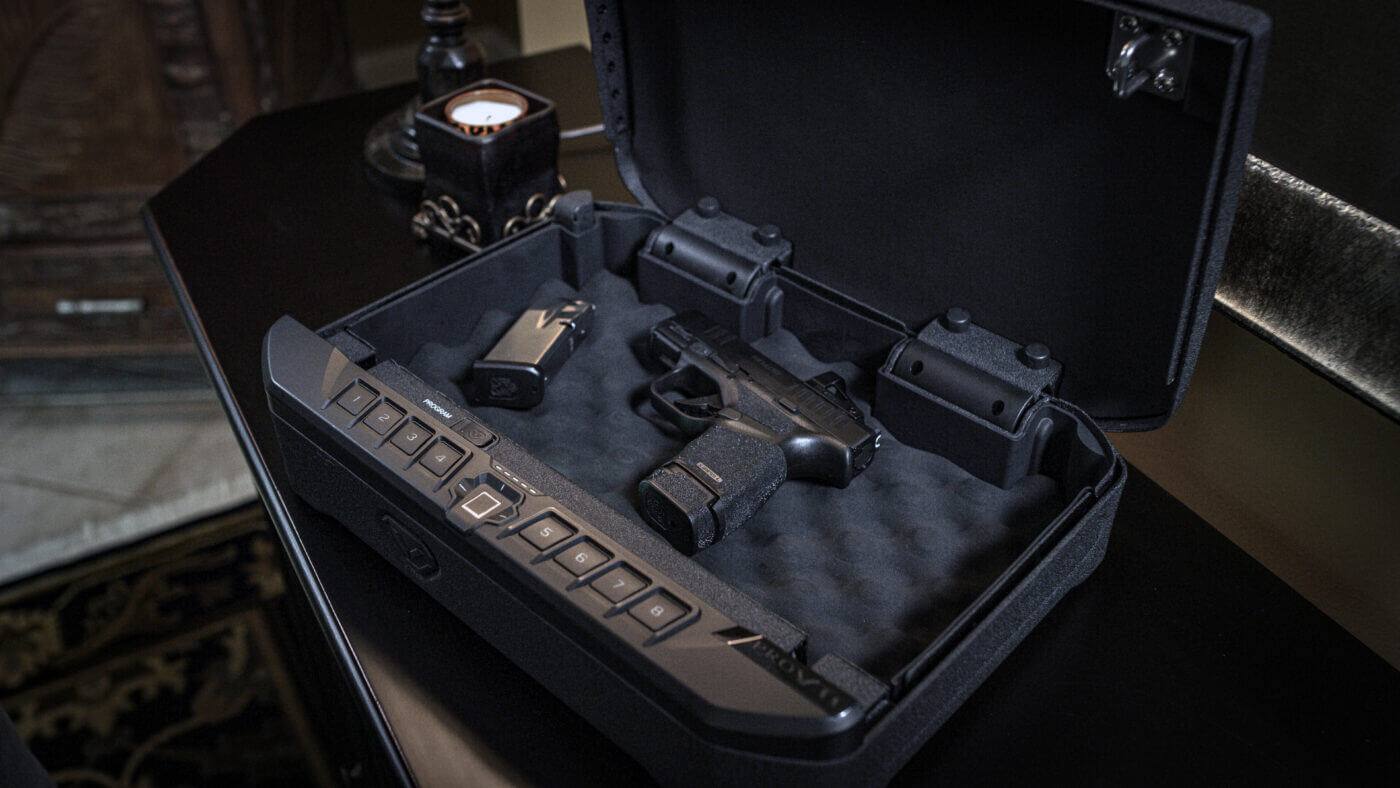
A lock box is a general category of storage solutions that attempt to balance theft-deterrence with speedy access to authorized users. Many of these storage units use some form of metal box large enough for a handgun with a keypad or fingerprint scanner. Typically, they can be bolted to a large piece of furniture or studs in your walls. Some units are tethered with a steel cable to help prevent theft.
Variations of the emergency access box also exist for rifles and shotguns. Some of these devices are designed to conceal under your bed while others mount to a wall.
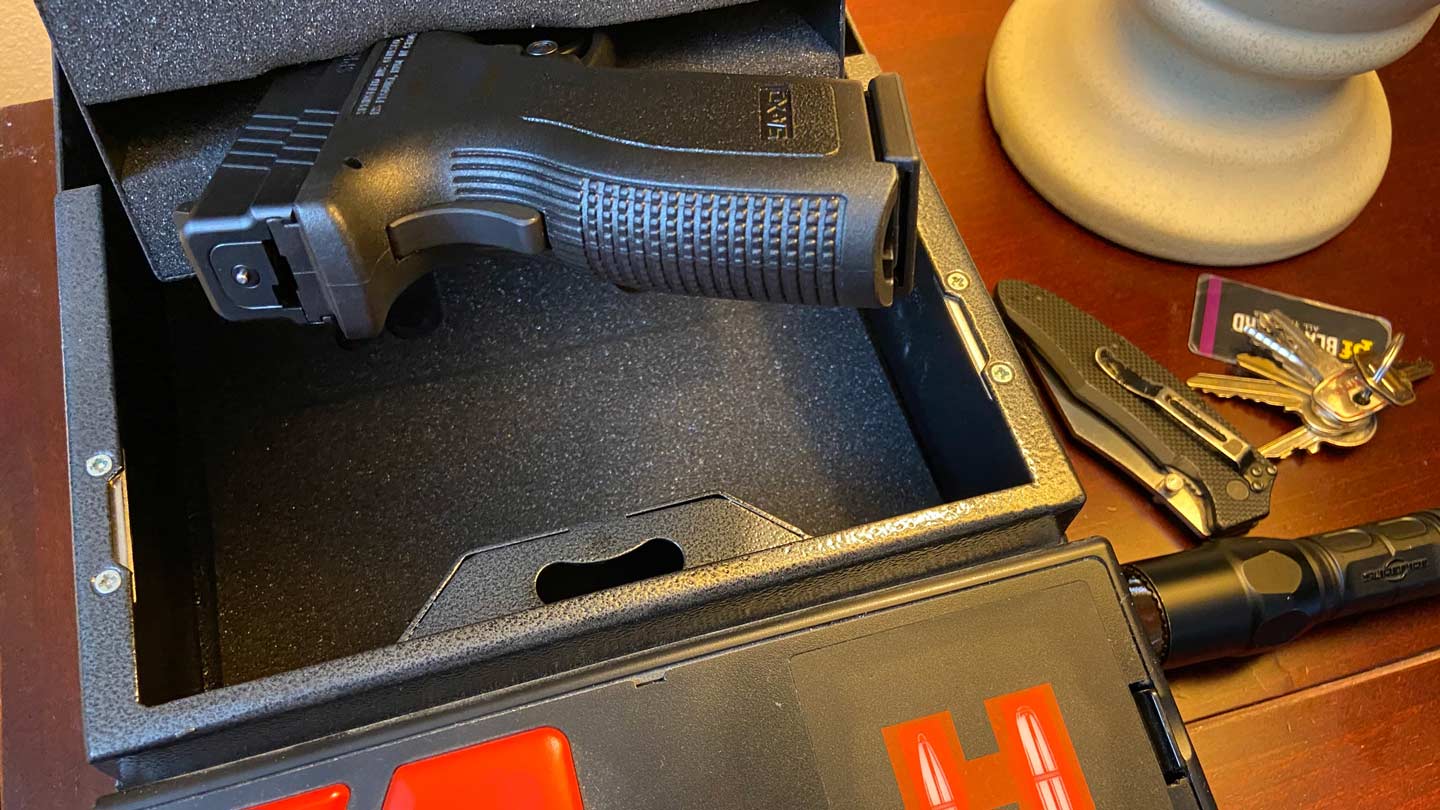
For my needs, I have a Springfield XD Service model pistol stored in a Hornady RAPiD gun vault next to my bed. (Click here to read my XD Service Model review.) This is a supplement to my SAINT rifle and part of my home defense gear. The Hornady lockbox offers fast access via a keypad and an RFID fob on my keychain. I have something similar in my office that stores a full-sized handgun to augment my Hellcat pistol that goes everywhere with me.

Final Thoughts
You are the master of your own domain. Therefore, you are in the best position to determine the best ways to store a gun to defend your home. One pistol hidden behind a specialty mirror near the front door might be a good option for you, but not for me.
As with all things, I urge careful consideration and finding a balance between home defense and preventing unauthorized people from gaining access to your firearms. Hidden gun storage only works when people don’t know about it. A locked gun storage solution offers better security but often at a higher monetary cost and slower access.
Find the balance of how to store a gun that works for you. Then, with training guns or unloaded firearms, practice accessing them. When an emergency comes, you don’t want to fumble with a lock or hidden access latch.
Editor’s Note: Be sure to check out The Armory Life Forum, where you can comment about our daily articles, as well as just talk guns and gear. Click the “Go To Forum Thread” link below to jump in!
Join the Discussion
Continue Reading
Did you enjoy this article?

 255
255






